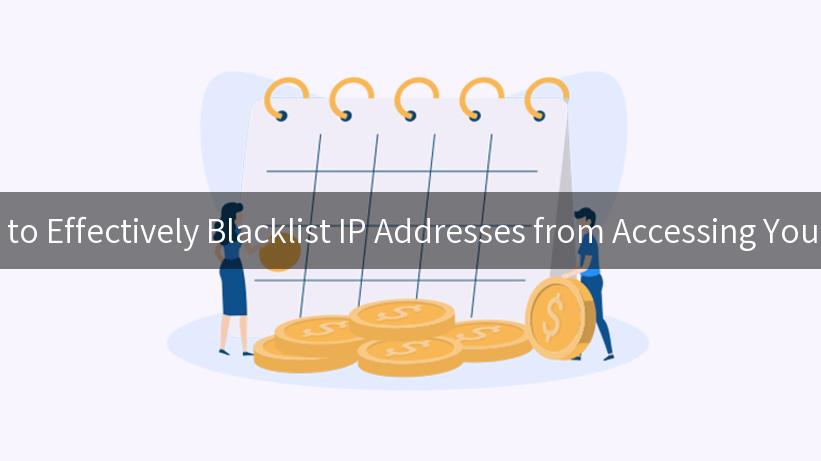
In the digital age, APIs have become a critical part of application architecture, allowing different software systems to communicate seamlessly. However, with the convenience of API calls comes the challenge of securing these access points. One effective strategy is blacklisting IP addresses that shouldn’t have access to your APIs. This guide will explore methods for IP blacklisting in an API context, focusing on tools like Kong, authentication techniques such as Basic Auth, AKSK, JWT, and how you can efficiently manage your API’s access control.
Understanding API Security
Before delving into IP blacklisting, it’s vital to comprehend what API security entails. API security involves strategies to safeguard APIs from malicious attacks, unauthorized access, and various vulnerabilities. Among various protective measures, IP blacklisting helps restrict unwanted traffic before it reaches your APIs.
Why Blacklist IP Addresses?
Blacklisting IP addresses can help mitigate various issues:
- Prevent DDoS Attacks: By blacklisting known malicious IPs, you can reduce the risk of distributed denial-of-service attacks.
- Control Access: Some services or applications might need access only from specific sources based on business logic.
- Secure Sensitive Data: APIs often handle sensitive data; restricting access can help minimize the exposure of this data.
Blacklisting with Kong
Kong is a powerful API gateway that offers a variety of plugins for rate limiting, authentication, and security measures like blacklisting IP addresses. Below is a stepwise approach to blacklist IP addresses using Kong.
Step 1: Installing Kong
To begin, you will need to have Kong installed. You can set it up in several ways, including using Docker. Here’s how you can do it:
# Installing Kong using Docker
docker run -d --name kong-database \
-e "KONG_DATABASE=postgres" \
-e "KONG_PG_HOST=YOUR_PG_HOST" \
postgres:9.6
docker run -d --name kong \
--link kong-database:kong-database \
-e "KONG_DATABASE=postgres" \
-e "KONG_PG_HOST=YOUR_PG_HOST" \
-p 8000:8000 \
-p 8001:8001 \
kong:latest
Make sure to replace YOUR_PG_HOST with your actual PostgreSQL host.
Step 2: Enabling the IP Restriction Plugin
Once Kong is up and running, the next step is to enable the IP Restriction plugin. This can be done via the Kong Admin API:
curl -i -X POST http://localhost:8001/services/YOUR_SERVICE/plugins \
--data "name=ip-restriction" \
--data "config.whitelist=WHITELISTED_IP" \
--data "config.blacklist=BLACKLISTED_IP"
In this command, replace YOUR_SERVICE with the service you wish to protect, WHITELISTED_IP with allowed IPs, and BLACKLISTED_IP with the IPs you aim to block.
Step 3: Verifying IP Restriction
You can verify whether your settings are working correctly by attempting to access the API from the blacklisted IP. Ensure your configuration is secure to prevent unauthorized access.
Leveraging OpenAPI Specifications
When providing documentation for your API, adopting OpenAPI specifications helps standardize the way you communicate the functionalities of your APIs, including how they manage access controls including blacklist settings.
How to Define Access Control in OpenAPI
In your OpenAPI specification YAML file, you can define the security requirements like this:
oauth2:
type: "oauth2"
flows:
authorizationCode:
authorizationUrl: "https://your-auth-server.com/auth"
tokenUrl: "https://your-auth-server.com/token"
scopes:
read: "Read access"
write: "Write access"
You can add custom extensions to further define your access constraints, such as which IPs can access certain operations.
Authentication Techniques
Basic Auth
Basic Authentication requires users to provide a username and password before accessing the API. It can be combined with IP whitelists to ensure that only valid users from approved IPs have access. However, it’s crucial to use HTTPS with Basic Auth to avoid sending credentials in plain text.
curl --user username:password "http://api.yourdomain.com/resource"
AKSK
Access Key and Secret Key (AKSK) is another method of authentication where the client uses a pair that is validated against the server, which can enforce IP restrictions. This method is very common in cloud services for API security.
curl -H "x-api-key: YOUR_ACCESS_KEY" "http://api.yourdomain.com/resource"
JWT (JSON Web Token)
JWT is a widely adopted method for securing APIs because it allows for stateless authentication. You can encode specific claims in the token, including a user’s allowed IPs, and the API can validate the token and reject unauthorized access.
curl -H "Authorization: Bearer YOUR_JWT" "http://api.yourdomain.com/resource"
Logging and Monitoring Access
To ensure the effectiveness of your IP blacklisting measures, it is critical to log API calls. This allows you to monitor for any attempts from blacklisted IP addresses. Kong has built-in logging features to record requests and access logs, which can be used to review traffic sources and adjust your blacklists as necessary.
| Log Type |
Description |
| Access Logs |
Records of requests made to your API |
| Error Logs |
Logs of errors encountered during requests |
| Plugin Logs |
Logs from APIs managed via Kong plugins |
Regularly Updating Blacklists
Maintaining an effective blacklist is not a one-time task. It’s essential to regularly review and update your blacklisted IPs and whitelisted IPs as your environment changes. Employ automation tools to make this process easier, such as scripts that regularly check for malicious IPs and update Kong programmatically.
APIPark is a high-performance AI gateway that allows you to securely access the most comprehensive LLM APIs globally on the APIPark platform, including OpenAI, Anthropic, Mistral, Llama2, Google Gemini, and more.Try APIPark now! 👇👇👇
Conclusion
IP blacklisting is an essential approach for securing your APIs against unwanted traffic. Tools such as Kong provide robust solutions to manage and enforce these measurements effectively. By integrating strong authentication methods like Basic Auth, AKSK, and JWT, you can further augment the security of your APIs.
Regular logging and monitoring will help maintain and update your blacklists to ensure continuous protection against malicious access.
By adhering to these practices, you can significantly reduce the risk of unauthorized access while ensuring your API remains secure and operational.